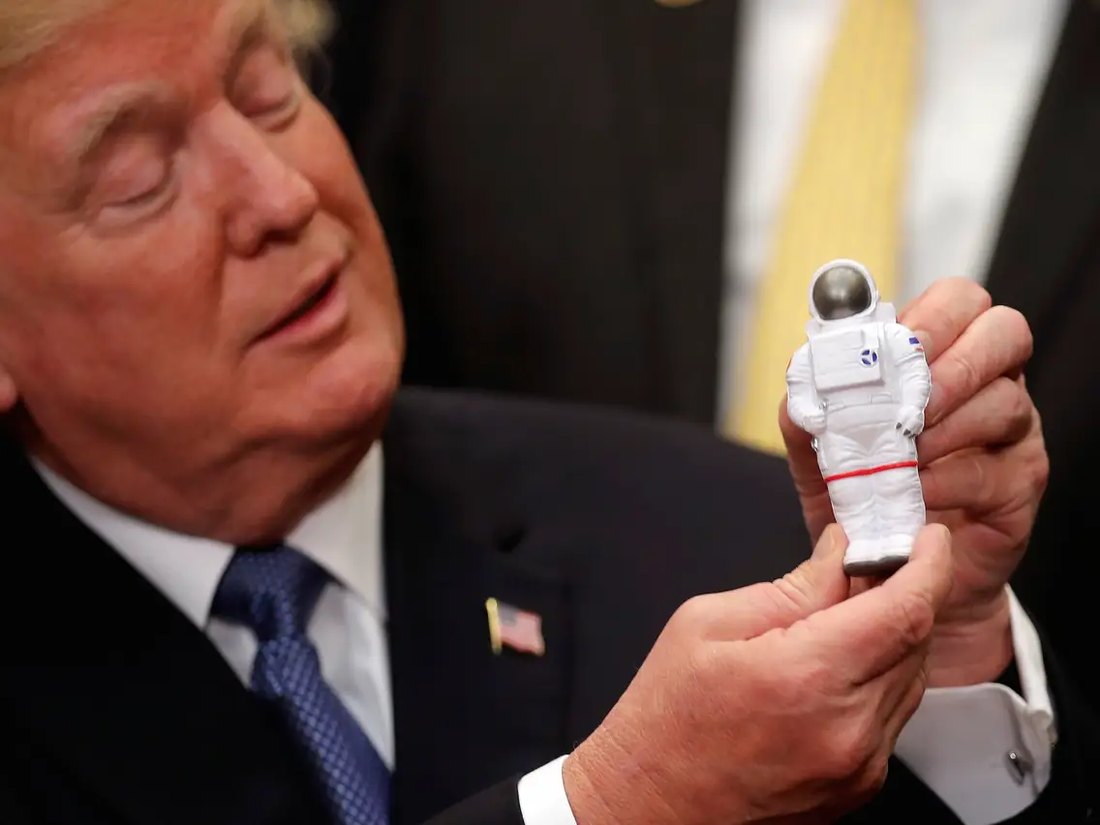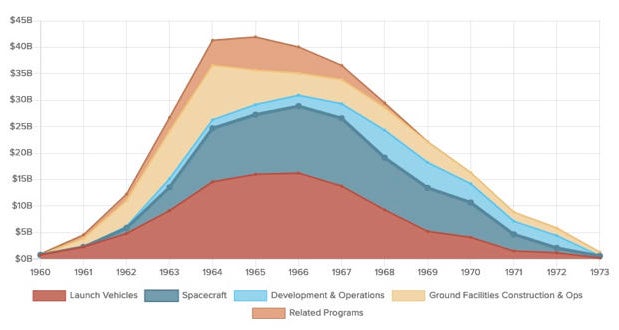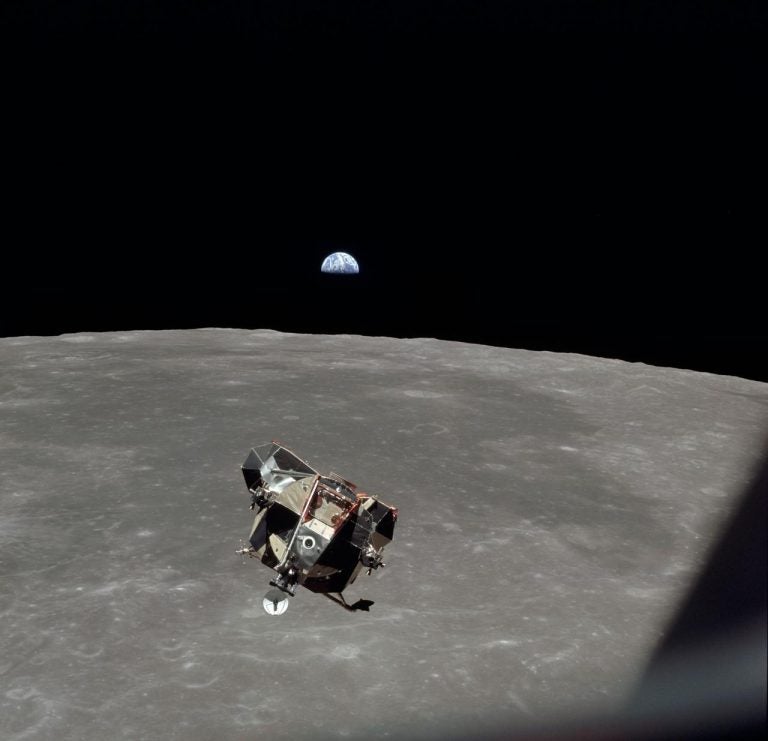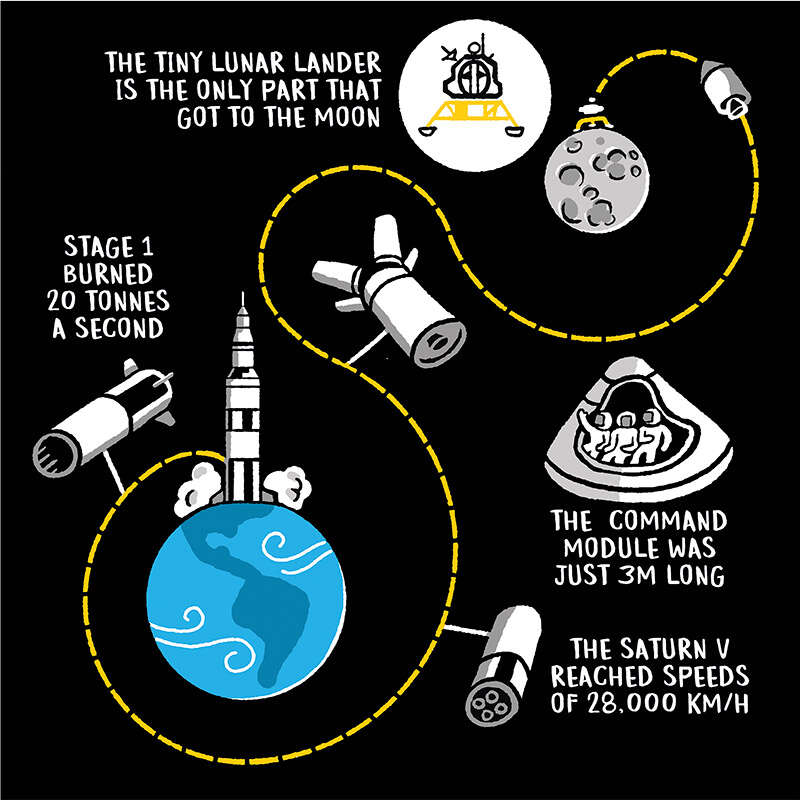
Why we can't just "Go Back to the Moon..."
Share
Decades after the iconic Apollo 11 mission that marked humanity's first steps on the moon, NASA is setting its sights on another lunar journey, aiming to return astronauts to the lunar surface. This ambitious undertaking, slated for as early as 2025, involves overcoming a series of formidable challenges. Let's delve into the intricate dance of science and engineering that accompanies the task of landing humans and robots on the moon.
At a mere distance of approximately 487 meters above the moon's rugged terrain, Neil Armstrong took command of the Apollo moon lander. Guided by the spacecraft's computer, the crew initially found themselves in a field scattered with boulders, prompting Armstrong's quick response to manoeuvre away from danger. Simultaneously, alarms blared within the module, and a gauge ominously signalled that their fuel supply was dwindling.
Fortunately, Armstrong and Buzz Aldrin not only successfully touched down on the moon but also ventured forth across its surface during that momentous summer of 1969. In the years following, five additional Apollo missions achieved lunar landings. Fast forward to today—half a century later—and NASA is poised to renew lunar exploration. The agency's recent successful launch of the Space Launch System, an exceptionally powerful rocket, and an uncrewed Orion spacecraft's safe orbit and return to Earth underscore NASA's readiness to embark on another lunar odyssey.
Nonetheless, the task of landing on the moon remains an intricate and awe-inspiring challenge, as we'll soon discover.
The Price of Exploration

Undoubtedly, space exploration comes with a hefty price tag. To send astronauts back to the moon, space agencies like NASA must allocate significant funds to research, development, testing, and mission execution. The total cost of a moon mission encompasses a variety of factors, including spacecraft design, propulsion systems, life support technology, navigation equipment, communication systems, and much more.
The Apollo program, which landed astronauts on the moon in the 1960s and 1970s, is a prime example of the considerable investment required. The six Apollo missions cost the United States billions of dollars, and the equivalent cost in today's money would be even higher due to inflation and the increased complexity of modern missions.
The Moon's Elusive Atmosphere

While our planet's atmosphere plays a crucial role in decelerating spacecraft upon re-entry, the moon presents a different scenario. Its wispy atmosphere resembles the outer fringes of Earth's atmospheric shell, similar to the region where the International Space Station orbits. Consequently, a spacecraft's braking mechanisms must rely on expelling substantial propellant.
"The moon's lack of atmosphere means that we can't glide down like we do on Earth," clarifies Csaba Palotai, the program chair of space sciences at the Florida Institute of Technology.
Intriguingly, this translates to astronauts facing narrower margins for error, with propellant constraints at play. NASA meticulously engineers each mission to accommodate unforeseen circumstances, such as critical course corrections. However, any substantial setbacks during the mission are not within their margin of allowance.
"It's a one-shot endeavour," Palotai emphasises.
Navigating the Void: GPS and Terrain Relative Navigation

On Earth, GPS serves as an invaluable navigation tool for aircraft, offering precise coordinates throughout flight. However, this navigational luxury doesn't extend to the moon, as NASA's Tom Percy points out: "GPS doesn't function on the moon."
Lacking this high-tech navigational network, NASA harkens back to the methods employed during the Apollo missions. Lunar landers compute thruster firings based on a calculated trajectory that guides the spacecraft to the desired landing site. This approach, known as "terrain relative navigation," employs onboard cameras to map the terrain as the lander descends. The system ensures astronauts are on track to a safe landing spot while steering clear of obstacles like craters and boulders.
Imagine trying to parallel park a car without the assistance of sensors or rear-view cameras. Now do it in zero atmosphere and in three dimensions.. The stakes are astronomically higher when attempting to land on the moon's unforgiving surface.
ARSE Jnr
The section where we explain the above to 5-year-olds (and Flat Earthers).

A long time ago, brave astronauts went to the moon, and now, NASA wants to do it again! Going to the moon is like a big puzzle with lots of tricky pieces. Let's explore some of the amazing things NASA needs to figure out before they can visit the moon again.
Imagine you have a cool spaceship, and you want to land it on the moon. But guess what? The moon doesn't have air like Earth does. Air helps things slow down when they come back to our planet. Without air, you need something special to slow down your spaceship. NASA uses something called "propellant" to help the spaceship stop safely on the moon.
But landing on the moon isn't just about slowing down. It's also about finding the right place to land. You know how you sometimes use a map to find where you're going? Well, in space, there's no map like we have for Earth. Astronauts use special cameras on their spaceship to take pictures of the moon while they're coming down. These pictures help them know if they're going to land in a safe spot or if there are big rocks or holes they should avoid.
And do you know how your toy cars have a remote control to make them move? Well, spaceships need special controls too, especially when there's no air to steer them. Astronauts use clever computers to tell the spaceship which way to go. It's like playing a game, but the spaceship has to win to land safely.
So, even though going to the moon is really tricky, NASA is like a team of space adventurers. They use smart ideas, cameras, and computers to make sure their spaceships land safely. And when astronauts step out of their spaceship and walk on the moon, it's like they're exploring a new, exciting place!
Isn't it amazing how scientists and astronauts work together to make these incredible journeys to the moon?
You’ve come this far…
Why not venture a little further into A.S.S. - our exclusive Australian Space Society.
And keep thrusting Australia into the deep unknown…
#Space_Aus




